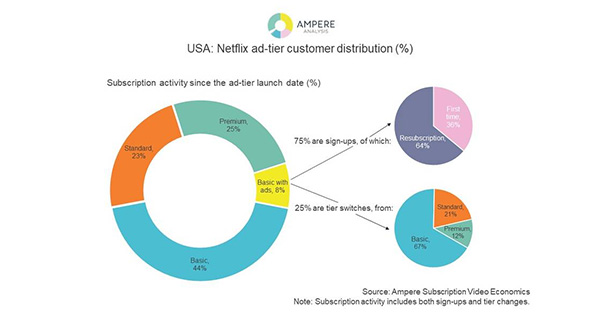Work is about how we come together to make things happen. In the past, most knowledge work was organized in and around office buildings. Many leaders still assume that organizational culture must be created and sustained through in-person interaction in office buildings, but alternatives are budding everywhere.
After the abrupt changes brought on by COVID-19 that sent many office workers into forced virtual work, workers without offices were surprisingly productive. Thanks to ubiquitous connectivity, efficient remote work opened unprecedented opportunity to challenge assumptions and expectations about office work.
The future “officeverse” will be the anytime/anyplace world of where we will work, when we will work, and how we will work. A useful way to plan for the officeverse is to think 10 years out into the future and imagine how the world of work will look, and help determine potential direction while remaining flexible about execution. Such “futureback” thinking — opposed to present-forward — helps us to work backward from the future and make better decisions in the present. Conversely, present-forward thinking roots us in today’s issues. Futureback helps us forecast futures, provoke insights, and align actions regarding where, when, and how office work can and should be done.
For example, thinking futureback from 10 years ahead, it’s obvious that sensors will be everywhere in the office and the officeverse. The direction of change regarding sensors is clear when you think futureback, even though the implications are not. Other factors are likely to shape the officeverse, including virtual reality, human augmentation through computers, Web3, gaming skills, AI applications like Chat GPT and Midjourney, and the influx of digital natives.
In other words, impossible futures are more likely to become possible in 10 years.
To prepare for the potential opportunities of the wider officeverse, every office worker, organization, and policy maker should ask, in this order:
- What is the purpose of your office and officing?
First, consider the personal benefits to the people who work in offices — especially young people. Then ask about collective purpose for organizations and communities. This isn’t an either/or choice; it’s a spectrum between the polarities of individual and collective. “Purpose” should be your first spectrum of choice. Why do you want an office at all? - What are the desired outcomes you aim to achieve with your office and by your office activities?
What results is your office seeking? What consequences are you seeking for your shareholders and stakeholders? While purpose is about intentions, outcomes are about results — and target results will depend on you and your organization’s value systems. - What will be the climate impact of your office buildings and the ways you are working?
The most important outcome over the next 10 years will be the climate impact. To date, office buildings have been more harmful to the environment than helpful. Net-zero impacts, where your office and its activities don’t contribute to greenhouse gas emissions in the environment, should be the minimum. - With whom do you want to office?
Think of this as the spectrum of belonging. In most traditional offices, people look alike, dress alike, and talk alike. Familiarity breeds comfort, cooperation, and understanding. Thinking futureback, however, diversity will be everywhere and offices will need to learn how to rethink inclusion and belonging. In the future, diversity will be a given and purposely different will be a goal. - How will you amplify the intelligence of your office?
This is the spectrum of augmentation. Thinking futureback, how will you best combine what humans do with what machines can do. What are the aspects of work where you need the most augmentation? Which activities do you want to reserve for humans and which can you augment? - Where and when will you office?
Embracing our new capability to work in different places and at different times shatters both the physical and temporal dimensions of the office. Consider what’s the best option for matching the nature of your work with how, where, and when it’s done. - How will you design an agile, resilient office?
Finally, how do you put it all together and act with resilience in an increasingly complicated future? Agility is the ability to get there early and respond in coordinated ways with speed, strength, balance, and grace. As command-and-control structures give way to shape-shifting braids, workers will move beyond the confines of traditional fixed organizational structures and cultivate the crowd’s collective intelligence for inspired action.
The seven questions demonstrate the need for clarity and nimbleness in these times of great uncertainty. Work to harmonize your choices within each and then across the roles you play with a goal of enhancing interactions, enriching work, and expanding connections.
Written by Bob Johansen.
Have you read?
Which are the healthiest countries in the world for 2023?
Best Business Schools In The World For 2023.
Managing the Authoritarian Business Risk by Dr. Joe Zammit-Lucia.
Winning Through Recession Needs a Different Approach by Payal Nanjiani.
Why Your ESG Strategy Needs to Apply to a Younger Generation by Jane Marsh.
Three Words for 2023 by Leo Bottary.
Track Latest News Live on CEOWORLD magazine and get news updates from the United States and around the world.
The views expressed are those of the author and are not necessarily those of the CEOWORLD magazine.
Follow CEOWORLD magazine headlines on: Google News, LinkedIn, Twitter, and Facebook.
Thank you for supporting our journalism. Subscribe here.
For media queries, please contact: info@ceoworld.biz
























































![Key Metrics for Social Media Marketing [Infographic] Key Metrics for Social Media Marketing [Infographic]](https://www.socialmediatoday.com/imgproxy/nP1lliSbrTbUmhFV6RdAz9qJZFvsstq3IG6orLUMMls/g:ce/rs:fit:770:435/bG9jYWw6Ly8vZGl2ZWltYWdlL3NvY2lhbF9tZWRpYV9yb2lfaW5vZ3JhcGhpYzIucG5n.webp)

















